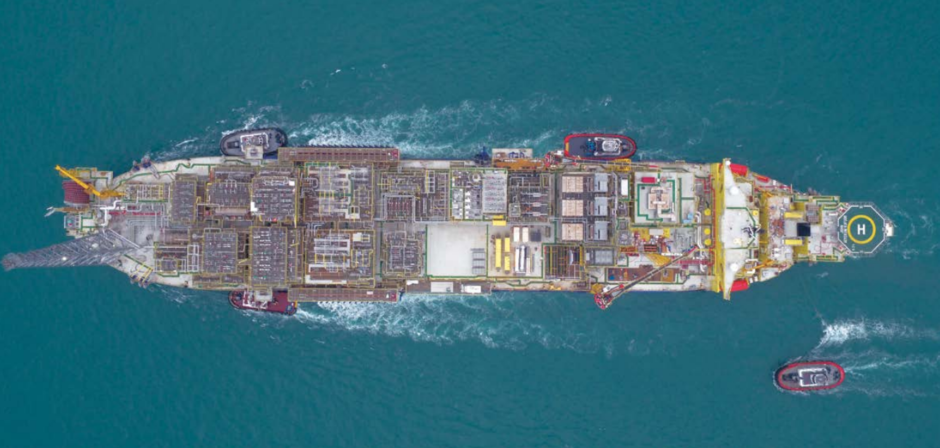
An Eni delegation visited Ghana this week to hold talks on expanding its Sankofa hub, although with no comments on unitisation with the Afina find.
Ghana’s Springfield Exploration E&P announced the Afina discovery in late 2019. There have been talks around unitising the Afina find with a field on Eni’s Offshore Cape Three Points (OCTP).
Eni Ghana managing director Giuseppe Valenti held talks with Ghana officials this week, including Energy Minister Matthew Opoku Prempeh. Also attending were the CEOs of the Petroleum Commission, Egbert Faibille Jr, and of Ghana National Petroleum Corporation (GNPC), KK Sarpong.
According to a statement from the ministry, the talks focused on developing CTP Block 4.
Eni announced the Akoma-1X well in the block in May 2019. At the time, the company estimated it had discovered 550-650 billion cubic feet of gas and 18-20 million barrels of condensate.
The Eni delegation seemed optimistic about development of the block, which lies around the OCTP permit. The discovery “showed favourable characteristics consistent with that of the Sankofa Gye Nyame fields”, the ministry said.
The three Ghanaian officials voiced their support for the work. Prempeh said the government would work “swiftly but cautiously” in order to expedite the project’s development.
Unitisation move
It seems that Eni would prefer to link up with its own Akoma discovery than accept the proposed terms for unitisation with Afina.
Commenting to Energy Voice, Eni’s Valenti said the company was working to find a “mutually acceptable solution” for Afina.
“Eni is trying to find out if there is a viable solution that could be beneficial to all parties. The timing for finding a viable solution is driven by the goodwill of the parties to share data and co-operate,” Valenti said.
Unitisation with Springfield’s discovery would need more technical work on Afina. Valenti said Springfield would need to appraise its discovery through production and interference tests.
Parties in a unitised project are required to “contribute to the costs and liabilities deriving from the development and production of hydrocarbons, related facilities, and other expenses. In order to have a right to the hydrocarbons produced and in proceeds from the production, each party must first pay its share of the costs of producing hydrocarbons from the unitised field.”
Eni has said OCTP has 500 million barrels of oil in place and 40 billion cubic metres of gas. The partnership has thus far invested $6 billion. It expects this will rise to $10.6bn over its entire lifespan.
The project will provide $2.8bn in fiscal take and $1.6bn in royalties to the state. GNPC’s stake will provide around $3.7bn.
Investment clarity
Ghana’s Institute for Energy Security (IES) published a report in May complaining the lack of unitisation would cost the state $6.34bn.
In comments to Energy Voice, IES executive director Nana Amoasi VII said it projected Afina held 650 million barrels of crude.
Explaining the revenue shortfall numbers, the IES official said this stripped out gas revenues and GNPC’s stake.
Wood Mackenzie has guided that Afina may hold 100mn barrels. It has called for more work to be done to prove commerciality.
Another local think tank, the Africa Centre for Energy Policy (ACEP), waded into the debate in early June. The attorney general should help guide the government’s position, ACEP said.
It also cautioned on the role of GNPC in the debate. The state-owned company is “an interested party” to the debate, given its participation. The government should recognise GNPC’s commercial position, ACEP said.
GNPC should not serve as “independent arbiter” in this instance, it said. “The Petroleum Commission or an independent party appointed by Eni and Springfield would have been better suited in this case.”
According to local reports, government officials are considering a third-party assessment of the unitisation proposal.
Updated on June 28 to correct the name of Ghana’s IES and executive director.
